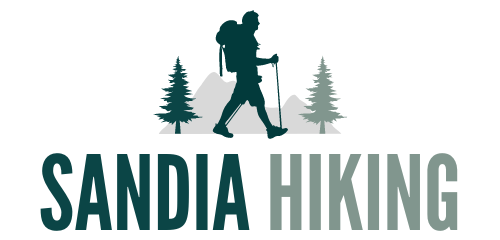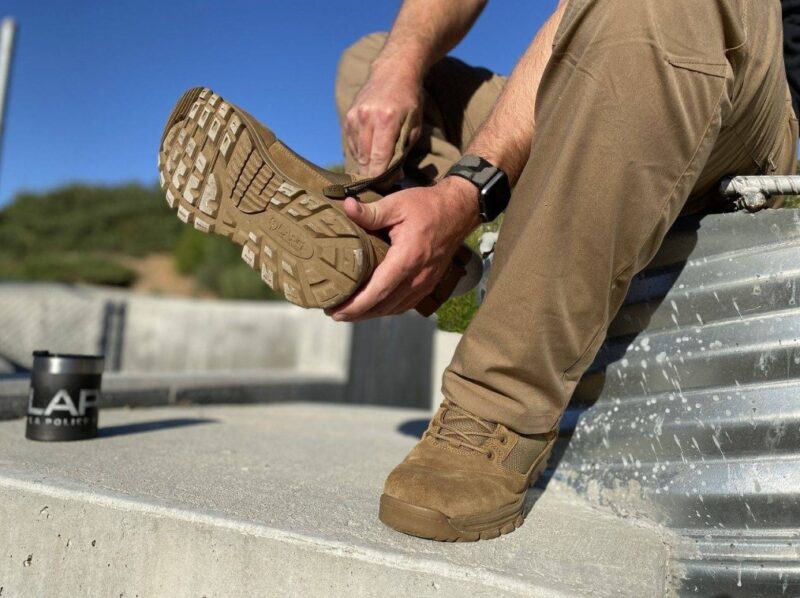Spending time on rough ground brings a mix of adventure and challenge. Nothing ruins the experience faster than sore feet. Whether you’re out for a quick trek or a multi-day exploration, foot pain can turn excitement into misery.
Key Points:
- The right footwear provides protection and stability.
- Socks can prevent blisters and moisture buildup.
- Proper lacing techniques reduce foot strain.
- Foot care before and after prevents long-term damage.
- Terrain-specific movement techniques help reduce pressure.
- Strengthening foot muscles minimizes discomfort.
- Hydration and nutrition impact foot endurance.
Choosing the Best Footwear for Rough Ground
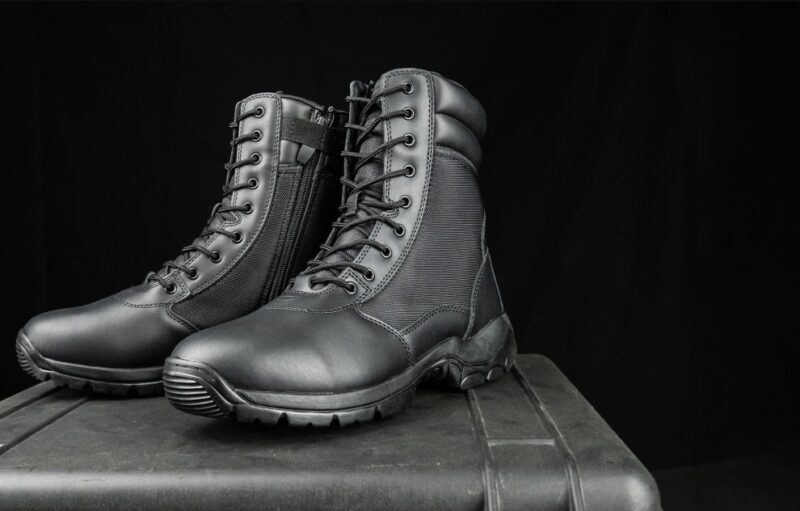
Good boots make all the difference. Walking across uneven paths requires solid ankle support, reliable grip, and protection against sharp surfaces. Tactical boots offer durability, reinforced soles, and ankle support, making them a smart choice for those who need extra stability.
A strong boot shields against sharp rocks and reduces foot fatigue over long distances.
Features to look for:
- Ankle support─ Reduces strain and risk of twisting.
- Grip & traction ─ Prevents slipping on loose surfaces.
- Cushioned insoles ─ Absorbs impact and provides comfort.
- Water resistance ─ Keeps feet dry in damp environments.
The right boot prevents injuries and enhances overall endurance. Investing in a quality pair ensures longer, pain-free treks.
Socks Matter More Than You Think
Socks play a bigger role than most realize. The wrong pair leads to blisters, excess moisture, and discomfort. A thick, moisture-wicking sock keeps feet dry and cushioned against impact. Wool or synthetic blends work best, as they regulate temperature and reduce friction inside the boot.
Best sock choices:
- Merino wool ─ Regulates temperature and wicks moisture.
- Compression socks ─ Improve circulation and reduce swelling.
- Double-Layer socks ─ Prevent blisters by reducing friction.
A good rule—always carry an extra pair. Wet socks make things worse, leading to chafing and skin irritation.
Lacing Techniques to Prevent Foot Pain
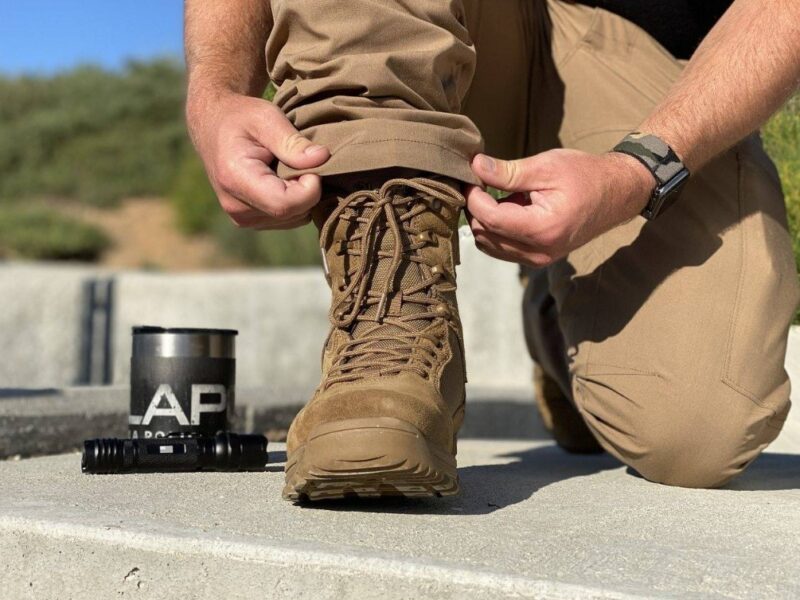
Lacing up properly can change everything. Loose laces cause sliding inside the boot, creating friction points. Tight laces cut circulation, leading to numbness and discomfort. A well-adjusted lace system distributes pressure evenly across the foot.
Best lacing techniques:
- Heel lock ─ Prevents feet from moving forward.
- Window lacing ─ Reduces pressure on the top of the foot.
- Toe-relief lacing ─ Eases pressure on the front of the foot.
Trying different methods until finding the best fit prevents unnecessary strain on the feet and ankles.
How to Strengthen Feet Before Hitting Rough Ground
Strong feet handle rough terrain better. A few simple exercises keep feet resilient and less prone to pain. Many hikers experience soreness due to weak muscles in their feet and ankles, making foot strengthening an essential part of preparation.
Strengthening exercises:
- Toe raises ─ Improves balance and endurance.
- Towel scrunches ─ Strengthens arch muscles.
- Heel drops ─ Prevents Achilles tendon strain.
- Rolling a ball underfoot ─ Reduces tension and improves flexibility.
Regular practice of these exercises makes a noticeable difference over time. Stronger muscles reduce fatigue and improve overall foot stability.
Proper Foot Care Before and After the Trek
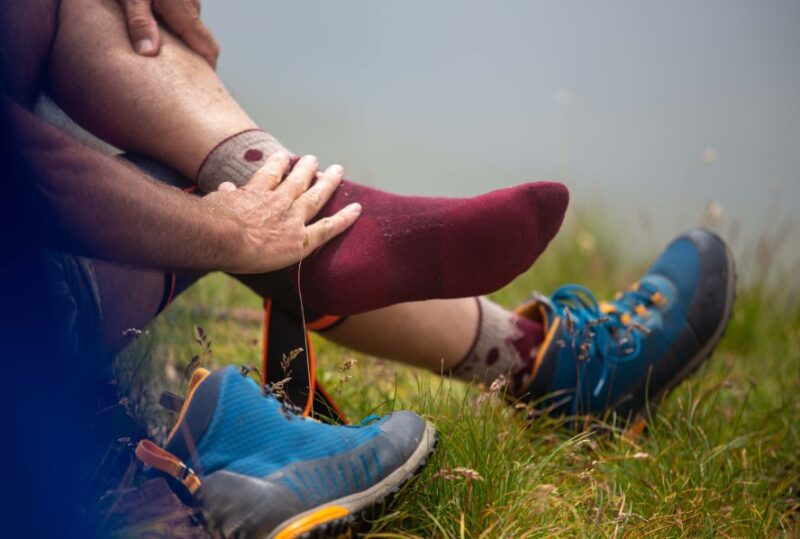
Feet take a beating on rough trails. Taking care of them before and after each trek prevents injuries and long-term discomfort.
Pre-trek tips:
- Trim nails to prevent pressure points.
- Apply anti-blister balm to reduce friction.
- Moisturize dry skin to avoid cracks.
Post-trek recovery:
- Soak feet in cool water to reduce inflammation.
- Massage arches and heels to prevent stiffness.
- Apply foot powder to keep skin dry.
Best Walking Techniques to Reduce Foot Strain
How you move matters. Instead of stepping hard on uneven ground, using strategic movement techniques can significantly reduce foot strain. The way the weight is distributed across the foot determines how much impact it absorbs.
Smart movement strategies:
- Shorter steps ─ Prevents overloading muscles.
- Even weight distribution ─ Avoids pressure points.
- Use trekking poles ─ Reduces strain on joints.
Stepping carefully prevents injuries and keeps feet fresh longer. Taking time to move correctly leads to greater endurance.
Nutrition and Hydration for Foot Endurance
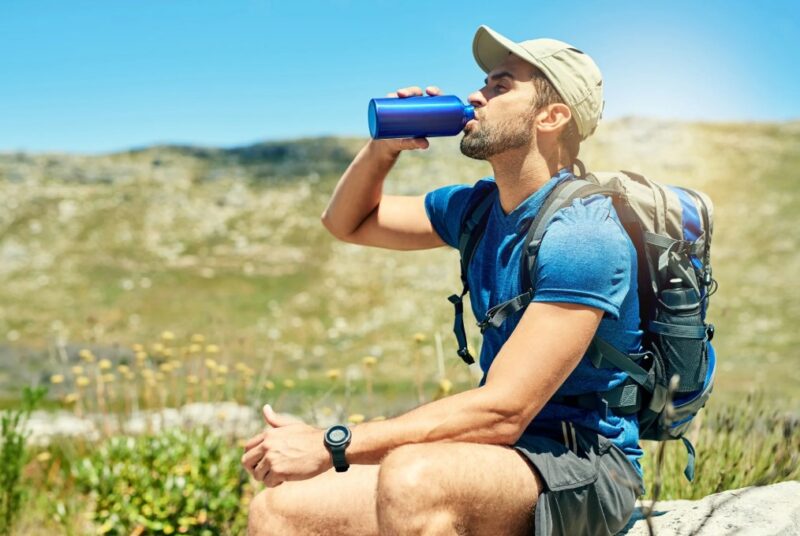
Dehydration leads to cramps and swelling, while poor nutrition weakens muscles. Proper hydration and food intake support overall foot health and stamina on long treks.
Key nutrients:
- Magnesium & potassium ─ Prevents cramping.
- Omega-3s ─ Reduces inflammation.
- Protein ─ Repairs muscle wear and tear.
Drinking plenty of water throughout the journey keeps feet in top condition. Hydrated muscles work better and recover faster.
Preventing Foot Injuries Before They Happen
Pain-free trekking starts with prevention. Many hikers deal with sore feet because they ignore early warning signs. Blisters, hotspots, and strain should never be dismissed.
Prevention strategies:
- Choose proper insoles ─ Supports arches and reduces impact.
- Adjust footwear fit ─ Ensure a snug but not tight fit.
- Take breaks ─ Resting feet periodically avoids overuse injuries.
Being proactive minimizes discomfort and keeps feet healthy.
Fun Fact ─ How Ancient Cultures Handled Rough Ground
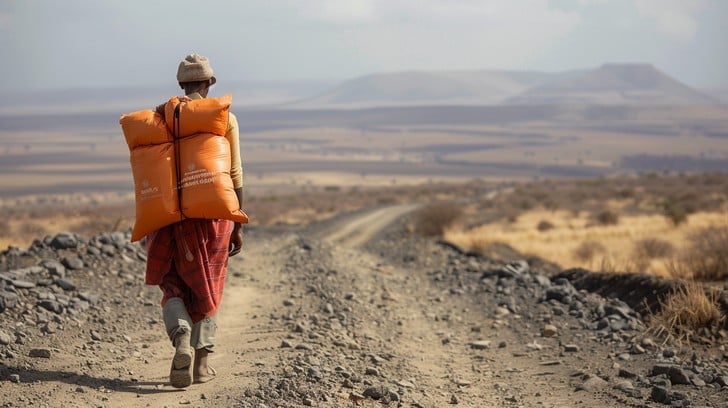
Hikers today rely on specialized footwear, but ancient travelers handled rough terrain barefoot or with handmade leather sandals. Some cultures, such as the Tarahumara people of Mexico, still use minimalist sandals to travel great distances across rocky landscapes. Their technique focuses on light, quick steps and well-trained feet to reduce strain.
Choosing the Right Insoles for Maximum Comfort
Not all insoles are created equal. Proper insoles improve weight distribution, reduce pressure points, and enhance comfort during long treks. Many hikers underestimate their importance, leading to unnecessary pain and fatigue. High-impact activities require cushioning, while those with flat feet benefit from strong arch support.
Types of insoles:
- Gel insoles ─ Provide extra cushioning and absorb shock.
- Memory foam insoles ─ Mold to the foot for a custom fit.
- Orthotic insoles ─ Offer strong arch support and correct foot posture.
Switching to the right insole makes a huge difference in overall comfort and endurance on uneven ground. Insoles that match foot shape and activity level help prevent soreness and long-term foot issues.
Final Thoughts
Feet handles a lot of stress, but the right preparation makes all the difference. A good mix of proper footwear, smart movement, and solid foot care keeps soreness away. The more attention given to foot health, the more enjoyable the journey becomes. Paying attention to small details ensures feet stay comfortable, allowing for longer and more adventurous treks.
